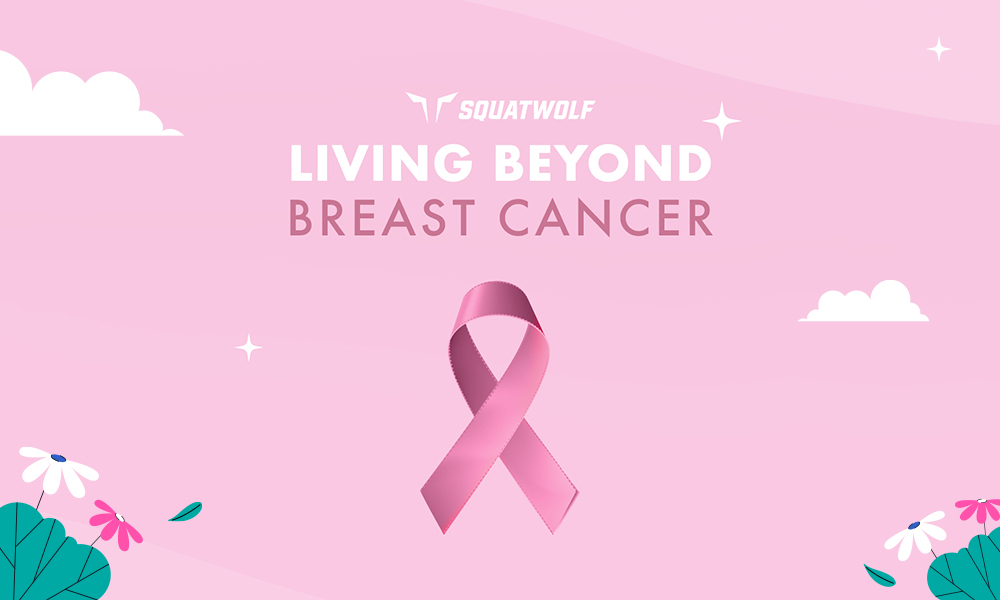What Is Breast Cancer | Risk Factors | Signs & Symptoms | Screening Guidelines | How You Can Play A Part
What Is Breast Cancer?
Imagine a garden where every plant and flower grows in perfect harmony. In this scenario, breast cancer is like a weed that suddenly sprouts. While most plants in your garden grow at a steady pace, this weed grows unpredictably and rapidly.
Just like not every unusual plant in a garden is a weed, not all lumps in the breast are cancerous.
Many of these lumps are benign – they’re just there, not causing harm or intending to spread. But some can act like invasive weeds, leading to genuine health concerns over time.
If you ever spot a “weed” or feel something different in your breast, don’t ignore it.
Just as you’d consult a gardener to ensure your garden’s health, reach out to a healthcare professional. They’ll help you understand its nature and give you the best advice on what to do next.
Understanding The Risk Factors

Digging deeper into breast cancer risks can feel overwhelming. To simplify, here’s a closer look at some primary factors:
Hereditary
Did you know genes can sometimes tell tales? Around 5% to 10% of breast cancer cases are inherited, passed down within families. So, if there’s a history in your family, it’s wise to be on alert.
Older Age
While age brings wisdom, it also brings certain risks. Women, particularly those over 55, have a higher likelihood of encountering breast cancer.
Personal History of Breast Cancer
Facing breast cancer in one breast increases the risk in the other. It’s crucial to maintain regular screenings if you’ve had a previous encounter.
Radiation Exposure
Undergoing radiation treatments, especially to the chest during younger years, can lead to a higher breast cancer risk.
Being Overweight
A healthy weight is more than just a number. Excess weight, especially after menopause, can push up breast cancer risks.
Early Period and Late Menopause
Hormonal timelines matter. Starting menstruation early or entering menopause later than average can up the odds.
Late or No Pregnancy
Women who haven’t been pregnant or who had their first child after 30 might see a slight uptick in breast cancer risk.
Hormonal Replacement Therapy
While it soothes menopause symptoms, hormone replacement therapy comes with a footnote: it can increase breast cancer risk.
Alcohol
Everything in moderation is always a good idea. Regular alcohol consumption is linked to a higher breast cancer risk. Being mindful of your intake is key.
Dense Breast Tissue
Women with dense breasts, as seen on a mammogram, have more glandular tissue and less fatty tissue. They have a higher risk of breast cancer than women with less dense breasts.
Previous Non-Cancerous Breast Diseases
Women diagnosed with certain benign (non-cancerous) breast diseases may have an increased risk of breast cancer. This includes conditions like atypical hyperplasia.
Exposure to Diethylstilbestrol (DES)
Some older women were given the drug DES during pregnancy in the 1940s through the 1960s to prevent miscarriage. Those women and their daughters have a slightly increased risk of breast cancer.
Lifestyle
Limited physical activity and certain dietary patterns, such as high saturated fat intake, might also contribute. Learn more about why fitness is important for women.
Birth Control
Some research suggests that women using contraceptives like birth control pills might have a slightly higher risk, but this is often a topic of much debate and research is ongoing.
Breastfeeding
Some studies have suggested that women who breastfeed for several years may have a slightly lower risk of breast cancer.
Read More About Women’s Health:
Foods High In Estrogen
How To Lose Weight With PCOS
4 Best Workouts for Your Mental Health
Breast Cancer Signs & Symptoms
Knowing your own body is a powerful tool. It’s like understanding the familiar streets of your hometown. When you’re familiar with how your breasts typically look and feel, you’re better equipped to notice any changes.
Now, mammograms are a fantastic way to detect early signs of breast cancer. Yet, they aren’t foolproof. Sometimes, they might miss a tiny alley or two, which is why it’s essential to be your own sentinel. Regular self-exams play a pivotal role.

Common Symptoms to Watch Out For:
- Lumps: The most frequent sign of breast cancer. While many lumps are painless with uneven borders, some can be soft, rounded, and even tender.
- Breast Changes: Variations in size, contour, or appearance can be an early indicator.
- Skin Changes: Look out for redness, flaking, or dimpling, particularly near the nipple.
- Nipple Discharge: Any discharge (excluding breast milk) and especially if tinged with blood, should be noted.
- Nipple Pain or Inversion: If the nipple suddenly starts to pull inwards or causes pain, it’s time for a check.
- Lymph Node Changes: Swollen lymph nodes can sometimes be a sign of breast cancer.
Always remember, these symptoms can be attributed to reasons other than cancer. Yet, it’s better to stay safe and consult a doctor if you notice any of these symptoms.
Early Detection & Diagnosis
Breast cancer isn’t a maze without an exit. If detected early, the path to recovery becomes clearer and more manageable. The primary key? Mammograms. Think of them as low-dose x-rays giving you a detailed map of your breast.
Types of Mammograms: Screening vs. Diagnostic
Screening Mammograms
These are the routine checks, kind of like your annual car inspection. Designed for women without any symptoms, their primary role is to catch breast cancer when it’s just a tiny blip on the radar. Research indicates that regular screening can reduce breast cancer mortality by 15-29%.
Diagnostic Mammograms
Picture this as the specialist checkup when your car’s making a weird noise. If there are symptoms or something showing up in the screening mammogram, a diagnostic mammogram digs deeper into it. It’s more detailed and combined often with ultrasound for precision.
Remember, while mammograms are valuable, they occasionally miss a spot or raise a false alarm.
Nevertheless, for women at average risk, regular mammograms and professional consultations lays the foundation for optimal breast health.
If you have early symptoms of breast cancer or fighting your battle with it, make sure you’re consuming a healthy diet tailored for you.
Recommended Screening Guidelines
Stepping into the world of breast cancer screenings can feel like charting unknown territory. But let’s break it down: The majority of women fall into what’s known as the “average risk” category. Think of this as not having a personal ticket to the breast cancer history show, neither in your family nor in your past, and not having had chest radiation treatments before hitting 30.
Following the roadmap provided by the American Cancer Society:
- 40-44: Ladies in this age bracket should start yearly mammogram screenings if they choose.
- 45-54: A mammogram is recommended annually.
- 55+: Women can either opt for mammograms every other year or stick to the yearly routine.
Now, for those in the “high risk” lane – if breast cancer runs in your family or if you’ve had early chest radiation – the advice is to pair mammograms with MRIs, annually, starting as early as 30.
Breast Cancer Stages and Treatments
Breast cancer isn’t a one-size-fits-all scenario. It’s like categorizing books by genres and sub-genres. There are stages, and each stage dictates a different narrative and treatment path:
- Stage 0 (DCIS): This is non-invasive, meaning the cancer cells haven’t grown beyond the milk ducts.
- Stages I-III: These are invasive stages, with cancer cells growing but still primarily in the breast or nearby lymph nodes.
- Stage IV: The stage where cancer cells have journeyed to other parts of the body.
Treatment options vary, ranging from surgery, radiation, chemotherapy, hormone therapy, to targeted therapies.
The kind of treatment you receive depends on your health professional’s advice.
The Role of Lifestyle in Prevention and Recovery
It’s incredible how our lifestyle choices, what we eat, how we move, and how we relax, play a role in our health narrative.
Dance, for instance, isn’t just about fun – it’s also a health booster. If you’re curious about adding dance into your routine, check out these 5 easy dance steps for beginners.
Diet also plays a starring role. Believe it or not, your gut can be your health’s best friend. For a better understanding, learn more about these 5 gut health hacks.
For those on the path of recovery post breast cancer surgery, exercise can be a beacon. It aids not just in physical recuperation but emotional healing too. Our guide on exercise and breast cancer post-surgery recovery offers valuable insights.
And ladies, if you’re scouting for easy-to-do workouts, don’t miss out on this comprehensive home workout for women.
How You Can Play A Part

Breast cancer isn’t just a topic for doctors and patients; it’s a community concern. And the more we converse about it, the more power we give to early detection and healing.
- Awareness Isn’t Seasonal: While October wears pink as a badge of honor, your commitment to awareness should be year-round. Because, cancer doesn’t check the calendar. Open dialogues, workshops, and even simple conversations with friends and family can be lifesaving.
- Fundraising and Donations: Consider hosting or participating in fundraising events. Whether it’s a bake sale, a marathon, or an art auction, every penny counts. Donations fuel research that paves the way to innovative treatments.
- Community Support: Support groups offer solace, share stories, and create an environment of understanding. Whether you’re a survivor, a fighter, or a supporter, your voice matters.
- Education: Protecting yourself and your loved ones starts with knowledge. Grasping early signs, symptoms, and the significance of screenings is empowerment in itself. And the more educated we are, the better armed we are against cancer.
- Be the Change: Whether you’re amplifying awareness on social media, participating in walks, or simply wearing a pink ribbon, every action sparks a ripple effect.
In this fight, unity is our strength.
Together, not only can we mitigate the impact of breast cancer but also foster a world of hope, support, and relentless resilience. So, let’s roll up our sleeves and play our part.
After all, collective action has the power to shape collective destiny.
Continue Reading









